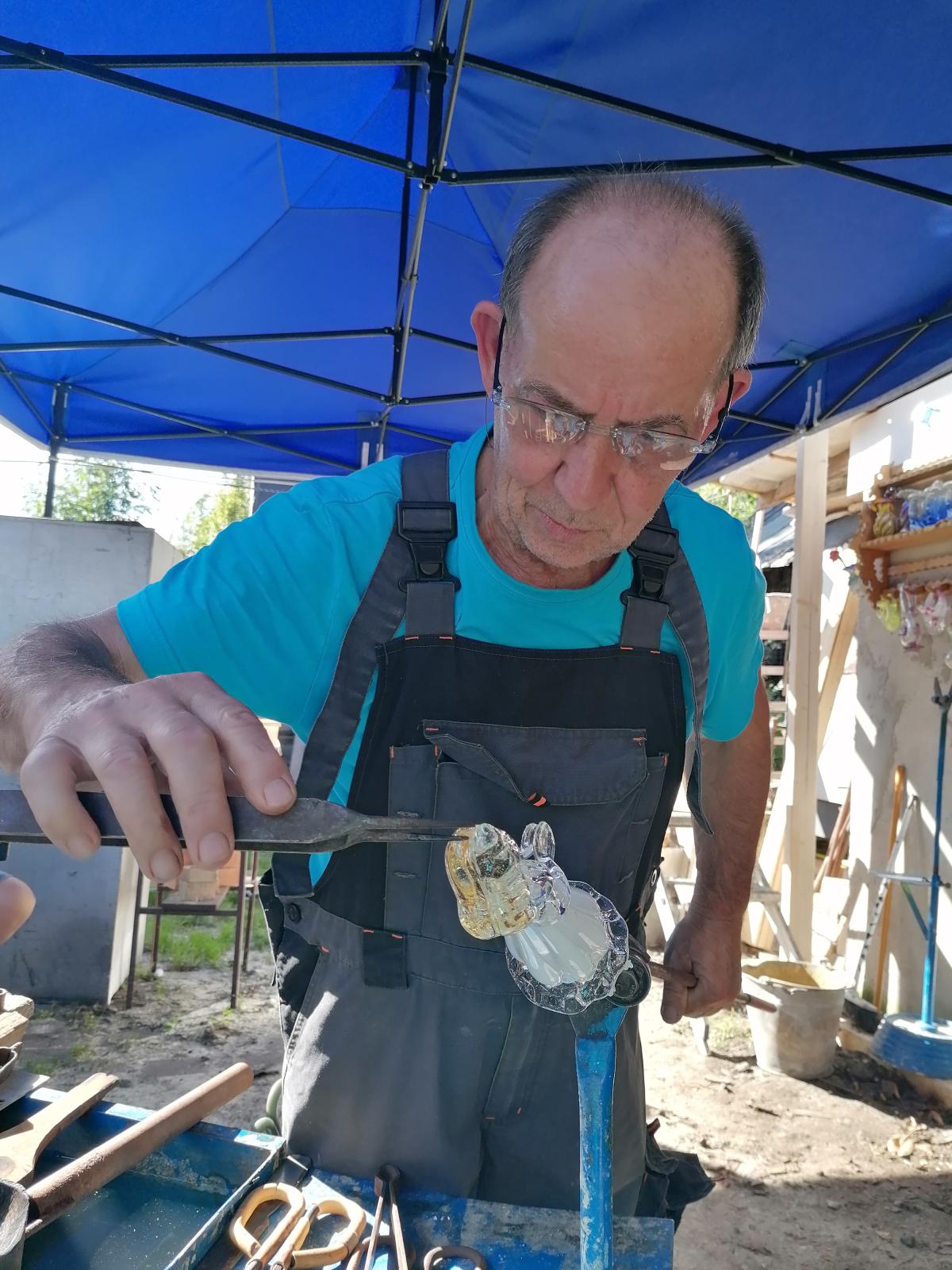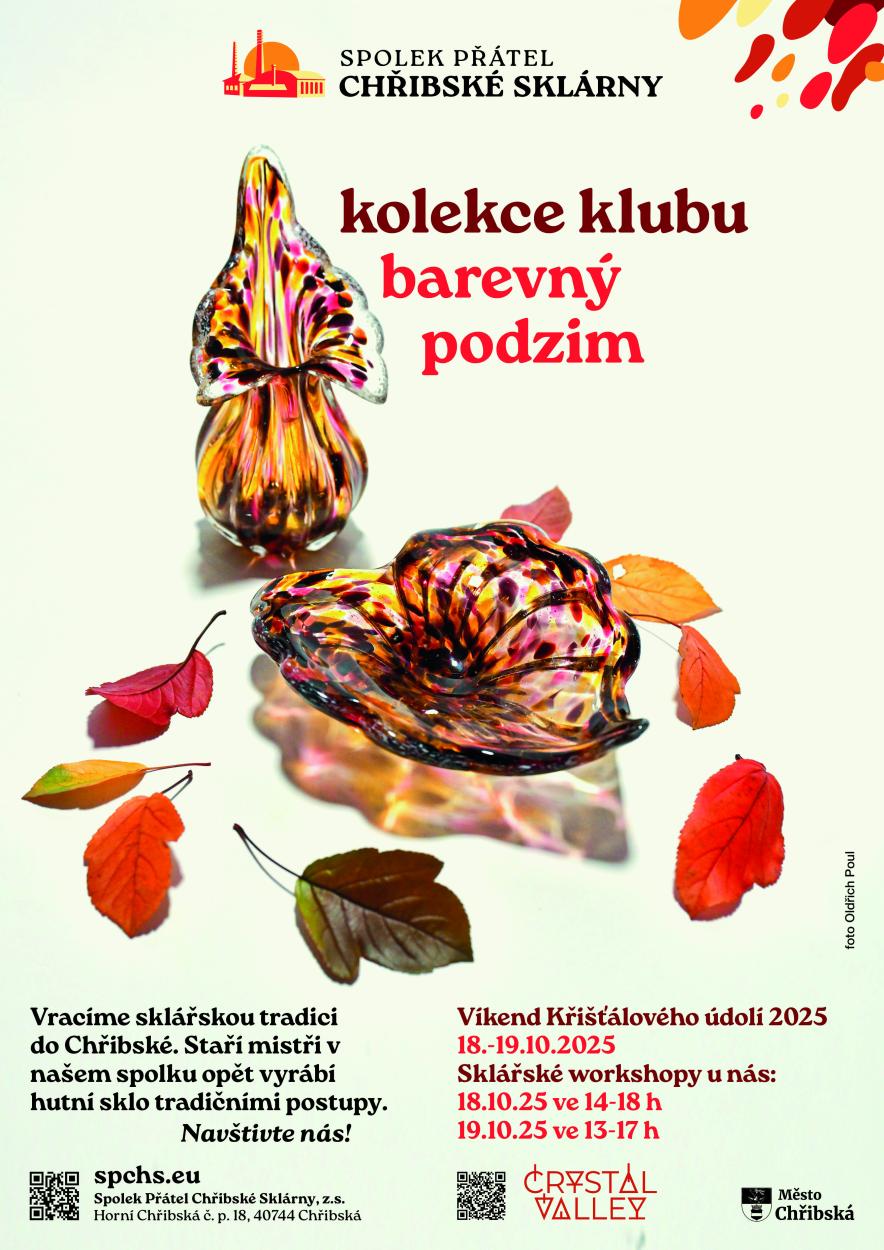The glassmaking tradition returns to Chřibská and will be part of Crystal Valley Weekend 2025
In August, the CHŘIBSKÁ SKLÁRNA FRIENDS ASSOCIATION decided to christen a small glassworks in Horní Chřibská No. 18 in the Veselý family garden in honour of Josef Michal Hospodka, a prominent glass artist, painter, teacher and, from 1961 to 1965, head of the 3rd glassworks of Borské sklo in Chřibská, to Atelier Michal. The glassmakers called Mr Hospodka Michale or addressed him by his nickname, Hospodin.
The christening was planned for the Chřibská Glass Festival on Saturday, 30 August 2025, at 5 p.m. After the melting process was complete and Jarda and Josef had removed all the glass from the furnace, the christening took place, opened by the association's honorary member, Mr Michal Hospodka, the elder son of Josef Michal Hospodka. He and his wife Eva travelled all the way from Central Bohemia, from the village of Vrdy near Náchod. He carefully prepared a speech in which he remembered his father and thanked everyone on behalf of the whole family for the honour bestowed upon them.
The next smelting will take place during the Crystal Valley Weekend, on Saturday, October 18, from 2 p.m. to 6 p.m. and on Sunday, October 19, from 1 p.m. to 5 p.m. You are cordially invited to be part of another wonderful event in Chřibská.
Association of Friends of the Chřibská Glassworks
Who are we?
We are a community of glassmakers, masters and apprentices, friends, supporters and enthusiasts of glassmaking of all ages. Our goal is to revive glassmaking traditions and bring glassmaking back to Chřibská, a picturesque town at the foot of the Lužické Mountains with a rich glassmaking history dating back almost 600 years.
Since the end of June 2025, we have been organising glassmaking workshops for the public, and the old masters in our association are once again producing glass using traditional methods.
A brief history of glassmaking in Chřibská
The oldest glassworks in Central Europe, operating with short breaks until 2007, was located in Horní Chřibská. Its existence is reliably documented in 1504, when it received its first known privilege from the owner of the Kamenice estate, Zikmund of Vartenberg. The often-cited date of its founding in 1414 is somewhat misleading. In 1514, the then mayor Veit Glaser of the Friedrich family sold the glassworks with all its rights and freedoms, as he had done a hundred years earlier, to his son Georg Glaser. This report is often interpreted to mean that the glassworks was founded in 1414, but other sources indicate that it did not exist at the turn of the 1450s and 1460s. The record probably only refers to a very long tradition, beyond human memory, or relates to other glassworks that the Friedrich family may have operated in the area earlier. The glassworks in Horní Chřibská almost certainly had its predecessors in the surrounding forests.
The Friedrich family owned the ironworks in Horní Chřibská until 1689, after which it passed through a series of owners, the most famous of whom were the Kittel family, who first leased the ironworks from the Kinský family in 1724 and then purchased it in 1767. The Kittels owned the glassworks until 1828, when it passed to their heirs. After 1867, it was taken over by Franz Zahn, who began using gas obtained from wood or coal to heat the furnaces. In 1882, the glassworks was taken over by Michel & Mayer, and from 1902 until the end of World War II, it was owned by the Mayer family. After the war, the glassworks remained in operation until 2007, when it finally closed down. Its operation was halted by the modern-day wild coupon privatization.










